On August 19, 1990, Armenian militants again shelled Baganis Ayrum and some other Azerbaijani villages. According to eyewitnesses, the Armenians were using grenade launchers, mortars and ground-to-ground missiles. The defenders of the village, consisting of two platoons of the military unit 5477 № of the Ganja special-purpose unit and the reconnaissance troops of the 368th motorized infantry, managed to repel the attack for several hours. However, the Armenians took control of the village after with the support of reinforcements.
The next day, tanks, anti-aircraft installations of the 368th motorized infantry, as well as combat helicopters of Transcaucasian Military District, were deployed to the combat area. As a result, the militants were knocked out of the village during the day. Today, the events in Baganis Ayrum village are practically not written about and are very rarely remembered. Nevertheless, the village went down in history as “Azerbaijani Khatyn” (Khatyn massacre 22 March 1943) in the course of the Armenia-Azerbaijan Nagorno-Karabakh conflict. Today we will tell our readers what really happened in Baganis Ayrum. The memories of the former Soviet soldier, whom he shared on one of the specialized military sites will help us in this.
The military unit 5477 № of the Ganja special-purpose unit and a platoon of the 368th motorized infantry, reinforced with armored personnel carriers and armored reconnaissance and patrol vehicles, were on service in the village on August 19, 1990. In the morning, a group of Armenian militants was noticed on the border of Armenian territory, which after come time attacked a police checkpoint at the entrance of the village. Units of the Internal Troops entered the battle with superior militant forces and called for reinforcements. Another platoon of the military unit 5477№ came to help from the nearby village of Qushcu-Ayrum. The battle lasted several hours. During the battle, the militants used the Alazan rocket, as well as improvised mortars. After several hours of the battle, under the onslaught of the militants, the units of the Internal Troops were forced to retreat. During the ongoing battle, Captain Lipatov died from a militant sniper bullet.

By the end of the day, the units of the Internal Troops were forced to leave the village and gain a foothold on the dominant heights. On the morning of August 20, 1990, armed units of the Transcaucasian Military District launched a military operation to neutralize the militants and liberate the village, involving motorized infantry and helicopters. By the end of the day, the village was liberated, and the militants who were able to survive retreated to the territory of Armenia.
I have been there. I visited Askipara (the village was divided into three parts: Yukhari-Askipara, an enclave of the Azerbaijani SSR, surrounded by the territory of Armenia, Ashaghi-Askipara, the territory of the Azerbaijan SSR, and Armenia’s Voskepar between them). I also took part in the fighting in Baganis Ayrum in late August 1990.
As for the "destruction of all living things”, I do not know about "everything", but what I know is enough for the eyes. Baganis Ayrum for the first time, the Armenians tried to capture, it seems, back in the spring of the 90s - but I can get confused, I wasn’t in those places (they took only part of the village, didn’t go any further (the gang was small, the local police kept the upper part of the village and internal troops from Kirovabad were on their way to that place.) Almost all the residents fled in time, and one family decided to hide and "stay" ... so later they found them - seven people, old and young people, among them were young and older people. More precisely, who stayed. They burned them all in the shed... The videos of the shooting show us so that we know what we will have to face -"Psycho-training"-"at the front" - well, and "moral-political" at the same time, so that they had an idea about the militants and what they are doing with the prisoners. In general, it was a little like people - heavy adust firebrands that they carefully pulled out and laid out on bed sheets - and these remains were scattered into pieces right in the hands of the "officers" ... the most horrible thing was that when they pulled out a very short firebreak, we realized that it was a baby... and put it on a bedsheet to that body in which you could imagine a woman by the width of the pelvic bones - because there was nothing to identify there ... a skeleton with pieces of coal on it ...
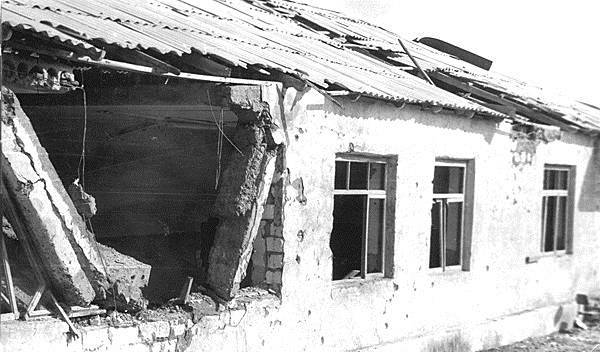
After that, an internal troops post was set up in Baganis - a detachment with a lieutenant (the post was remote and independent). In mid-August, they were armed “according to the state” (they were given RPGs and SVD, and the ammunition for the machine guns was doubled), because several times they fired at the post and there was evidence of possible “increased activity”, but there was no “armour” at the post-it was not the special forces of the internal troops, but the usual "motorized unit of the police", they had a total of 2-3 armored personnel carriers on the battalion, "operational armored groups". They decided not to involve the army, because there was just a big fuss about the "use of the Soviet Army against their people," and no one expected such increased activity and the fact that the militants had the nerve to attack the troops ... and they had enough. There was a gang of 200-300 people, with a battery of “hail strikes” and mortars, with 2-3 DShKs and a bunch of smaller weapons. They used KrAZs as “armored barriers” - they lifted the body and pearls in reverse, the machine didn’t break the bottom of the body ... if there were no RPGs at internal troops, they would have passed in tight formation, and when the first jet “burned” the body, and then the KrAZ grenade hit the motor - they didn’t play these games anymore. But they got fired from everything - then we found unexploded mortar mines in the village, I had to look at my feet, and some houses were simply broken by “blanks” from town bombs (PF they did not have then).

In general, internal troops' department did not allow the gang to approach the village for two hours, but the soldiers allowed the local people to flee; then the lower part of the village, near the river, still surrendered. The lieutenant with the SVD secured the getaway from the attic of one of the houses - the Armenians “found” and destroyed it. The remnants of the department moved up the hill, there was a village school, a solid brick two-storeyed building which was populated with a couple of local policemen. In the village, there was also an Azerbaijani police post with AKMs and Makarov pistols, and several local “militias” with double-barreled guns, but they almost did not take part in the “main” battle: the militiamen did not have helmets and body armors (they weren’t enough at all in the 4th Army at that time), besides, suicide was supposed to be involved in full-scale combat with double-barreled guns. So they covered the rear area of the internal troops, looked after them so that they would not be circumvented and isolated - this was also necessary as from Voskevan it was easy to enter the rear part along the slope. Then, a "quick reaction group" from the same battalion hopped on ZIL-131s, a platoon under the command of a captain, a former "Afghan", took up the normal defence, and as soon as it became clear that the matter was not limited to the usual "raid" - they raised the army units on alert. But there were a few hours of driving from Kirovabad on a not-so-easy road, so they “pinned down” that platoon tightly - the captain then admitted to our officers that he had already saved “one cartridge in his pocket” because the cartridges at the platoon ran out...They were lucky that the commander of division -23 immediately realized and asked for the ‘command’ from the army commander to first move several training tanks from the Karayaz training ground to Askipara and Baganis. They gained at least a couple of hours with this. They had a dozen practical shells (‘hard steel plugs’ with cement instead of explosives) for a couple of machine-gun belts. However, the fact of the appearance of tanks has already meant a lot.
Together with this attack, shelling of posts began almost across the border in Gazakh and Tovuz regions, they blocked Yukhary-Askipara. Therefore, troops and landing troops from Kirovabad had to ‘spread’ along the entire border, and the 23rd division had not yet been deployed, it only had one regiment that was more or less combat-ready, and it had to be kept in reserve. Except Baganis, a divisional reconnaissance also went to Askipara (there were two large villages under attack, and we had to keep the normal road to both Askipara and Baganis), ammunition equipments were brought to Baganis Ayrum for tanks. For the first time, it was enough, but in the meantime, ‘remote’ reinforcements began to come up.
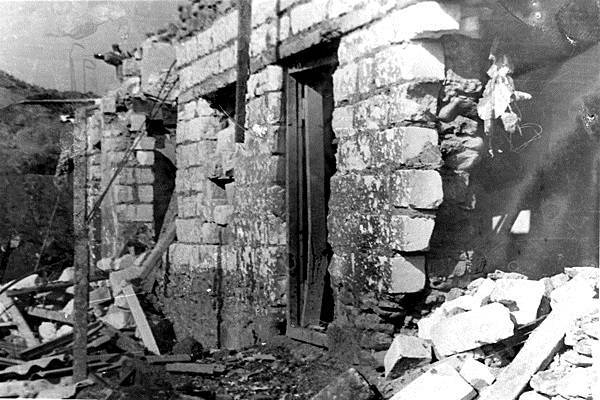
We were also alarmed, but even on the BRDM vehicles we drove from Baku for several hours, and officers replaced the drivers from time to time. When we picked it up, everything was equipped for patrolling in Baku at curfew – with the KPVT there were barrels and bolts were removed and handed over to the warehouse (only casings were left), there were no 14.5 -mm cartridges on the tapes, for PKT in the “arms” only one tape, and for the machine guns, only 2 magazines were equipped…they ran for three hours, they got everything, put them in their place, charged, refuelled "until they were done." For example, no one had any grenade launchers at all, they had to set it up and the officers knew (at that time the GP-25 was a “new discovery” in our places), the night sight on only one SVD was for “just in case”, the rest in the warehouse were without batteries ...
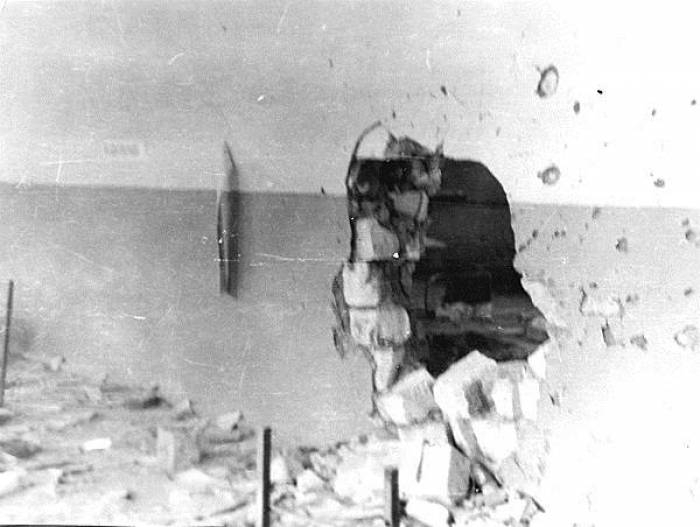
Generally, when we arrived, there was an on-going war to the fullest, the tankers even managed to dig trenches for equipments. Our platoon in Baganis Ayrum was involved in the upper part. On the other side, the village was fired upon, and there was no one to climb to the mountains and forests - infantry for machine guns and mortars simply would not reach, so they simply looked for outbreaks of shots and ‘neutralized the firing points’. The hail-strikers wouldn’t be rolling out for the exact direction- they would have been smashed by the tankers right away but sometimes they tried to shoot from the ‘closed positions’ and mortar launchers were sometimes shot. Armenians shot down one gun truck and burned the car. We also dug 72 holes in 20 minutes, drove my armored reconnaissance and patrol vehicle into a trench in the middle of some kind of garden, and I began to turn tank turret around. When along the ridge from all the trunks they began to work - the silence began on that side. Then we all got stunned, when a couple of ‘clips’ arrived, turned over the mountains and hit the unguided missiles, after which the ‘spinners’ went over the village and started to hammer from the cannons - only the soot blew off and shell casings were raining.
With rockets they covered the position of the ‘pillars’, they could see above, and with their guns searched the places where the mortars could hide. With the help, the shelling ended immediately. The guys from our troop went through the valley to the mountains. We found on the crest an abandoned heavy machine gun and dead bodies but did not go further. 4 groups of 7-8 people could do only very little, only posts were placed on the tops of the crest.
Further, the landing and reconnaissance of the army submission "cleaned", flew on the Mi-8 and looked out from above. They found 2 whole ‘town-blocks’, abandoned, pulled out by tanks, showed them to reporters and a few days later blew up all ‘by all the rules’ so that there was nothing to repair. Then men from the 23rd division dragged away what was left.
In the summer of 1991, there were practically no residents in Yukhary-Askipara. People left Baganis Ayrum and few returned.
More about: Nagorno-Karabakh








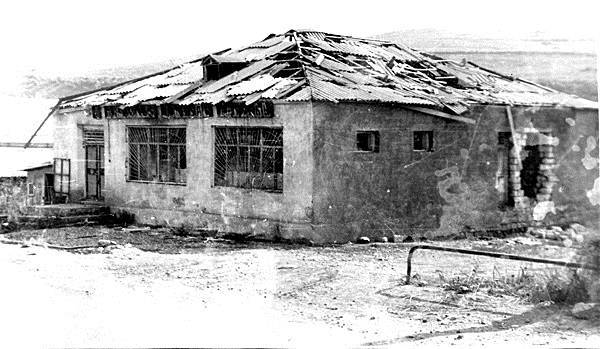



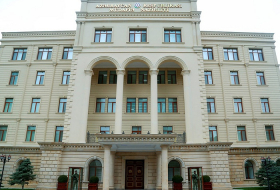
-1747837442.jpg&h=190&w=280&zc=1&q=100)


































